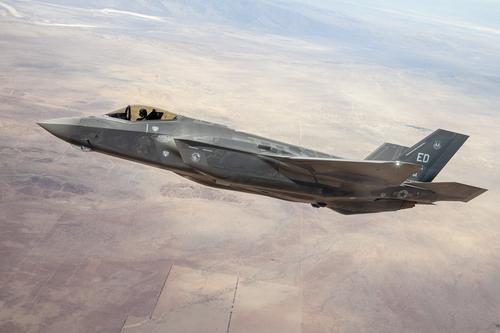Improved simulation and analysis tools are helping to develop more and better once-exotic alloys, plus good old aluminum, for lighter aerospace designs with less waste.
May 23, 2016
The number and types of lightweight metals available for building military and aerospace components are expanding. Not only are aircraft structures and components making use of lightweight aluminum alloys, but also alloys of titanium, and other metals previously considered too exotic like beryllium. These materials help vehicles meet tougher fuel consumption standards by shedding hundreds of pounds.
About 50% of the aerospace materials market by volume consists of aluminum, according to a MarketsandMarkets research report. The potential weight that can be shed by using titanium for aircraft components has spurred the growing use of this material in next-generation planes, which the report forecasts will drive up titanium demand through 2019.

More aircraft structures and components are being made of lightweight aluminum alloys, as well as alloys of titanium and other metals previously considered too exotic, difficult to use, or expensive like beryllium. These materials help aircraft such as this Lockheed Martin F-35 Lightning II jet fighter meet tougher fuel consumption standards by shedding hundreds of pounds.
(Source: Lockheed Martin)
Lightweight alloys of several kinds are the focus of the Lightweight Innovations for Tomorrow (LIFT) consortium operated by the American Lightweight Materials Manufacturing Innovation Institute (ALMMII). The institute's goal is to accelerate the transition of technologies already developed by industry and research organizations from the applied development stage to fully-fledged production-line-ready processes.
LIFT Consortium Looks To Improve Multiple Metals
One LIFT project led by Boeing and The Ohio State University aims to cut manufacturing costs and part weight in transportation applications by advancing technologies used to die-cast and heat-treat aluminum parts. It will focus on a high-speed, vacuum-aided, aluminum die-casting process to produce access panels on an airplane wing, cutting both weight and costs, and then heat-treat them to increase their hardness.
This project will also take advantage of integrated computational materials engineering (ICME), which combines design and production parameters with information about the metal's microstructure to predict the performance of aluminum die-cast parts. This could reduce the amount of time needed for designing and testing new components using new materials and processes.
ICME is even more important in the consortium's most recent projects. With GE Aviation and The Ohio State University as lead partners, LIFT's third project focuses on advancing computer analytics so engineers can better understand and predict the performance of titanium alloys in aircraft engines and other aerospace designs. One important use of titanium is in the turbine fans in aircraft engines: these are critical to maintaining those engines' high performance and they must operate in demanding conditions.
READ MORE ARTICLES ON METALS:
Computer models that can better predict how a design will perform will let engineers do less "making and breaking" of multiple test parts before they know the design is right for a specific critical component. Titanium's expense means the cost of designing and testing new parts using conventional methods has been high. The project's ICME focus can be applied across several related manufacturing processes to reduce the cost of both materials and testing, as well as cut typically long lead times for developing new aerospace designs.
This project will look closely at FEA (finite element analysis) tools, said John Allison, professor of materials science and engineering at the University of Michigan and LIFT's materials modeling and simulation technology lead. To date, when analyzing stress and temperature distributions in structures, FEA tools assume that materials properties are constant and uniform throughout a part. Yet those properties can be very different depending on both manufacturing processes and history. Different processes, such as casting versus forging, can produce different properties in two different parts, and variables in their separate manufacturing histories can produce different materials properties.
The consortium's most recent work focuses on improving the understanding of, and predicting the performance of, aluminum-lithium alloys in formed parts for next-generation jet engines and other aerospace applications. These alloys are both lighter and stronger than aluminum alone.
About the Author(s)
You May Also Like



